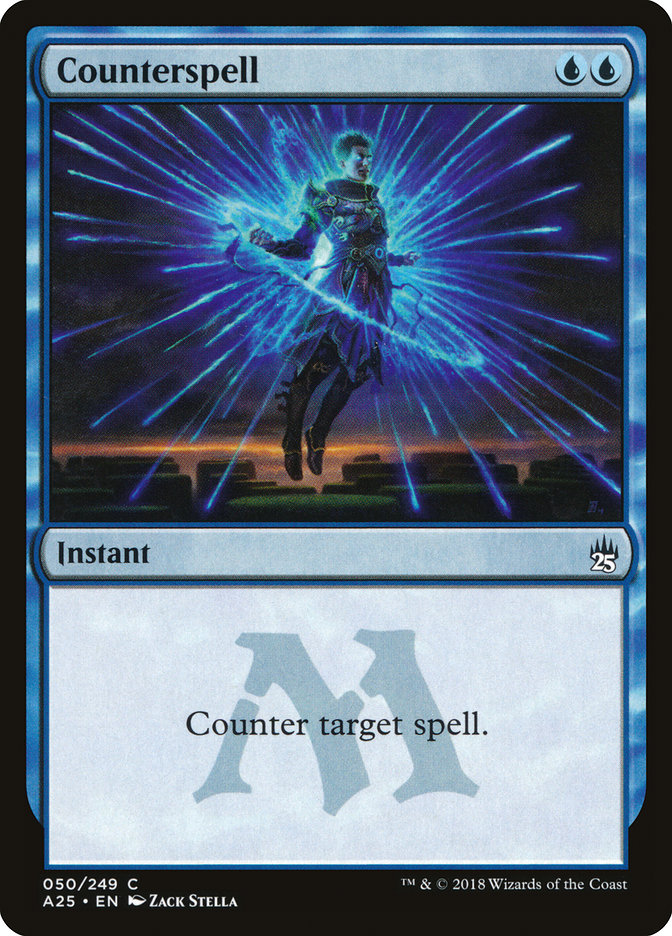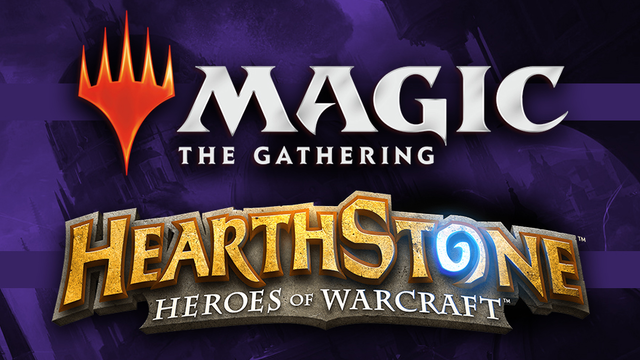Magic: The Gathering, the tabletop game about powerful plane-hopping wizards, has seen a spike in popularity with the release of its new digital analogue, MTG Arena. For years, people have been discovering Magic at their local game stores and through their D&D groups. Now more than ever before, players are coming to Magic from other digital games, including other collectible card games such as Hearthstone.
If you’ve come to Magic from Hearthstone, you’ll notice many similarities between the two games. In both games, you’ll pay mana to cast spells, and you can only use as much mana as you have access to for the turn. You’ll summon creature (or minion) cards and attack with them to reduce your opponent’s life total and win the game.
But there are also some key differences between Magic and Hearthstone. Unlike Magic, Hearthstone was designed to be digital, and there are several game mechanics and effects in the latter game that take advantage of the digital platform. Consequently, you’re likely to see more “random” effects in Hearthstone, such as generating a random minion or dealing damage to a random creature – these effects are much harder to replicate with paper cards, so they’re less common in Magic in general. Magic also has 26 years of history behind it – there are more cards and more rules, so the learning curve is steeper.
But not to worry – we’re here to provide an on-ramp from Hearthstone to Magic. In this article, we’ll break down the major differences between the two games and provide tips for Hearthstone players looking to make the transition from Legendary Hero to Mythic Champion.
Mana
In Magic, mana is never a given. You only have as much mana as you have mana-generating cards in play, and if you want access to those cards, you’ll have to draw them.
The first major difference between Magic and Hearthstone is that the latter has a guaranteed system of mana. In a game of Hearthstone, your mana pool will increase by one each turn until you have a total of ten mana. The only way to generate additional mana is to use The Coin or another mana-producing spell.

The most common mana-generating cards in Magic are land cards. You may play one land card on each of your turns, if you have one to play, and each land card (typically) generates one mana. Additionally, there are some creatures, artifacts, and other spells that also generate mana, and they’re good to have if you have expensive spells to cast.
As much as Magic players try to reduce variance, the number of lands a player draws will often decide a game. Draw too few lands and you won’t be able to cast critical spells; draw too many and you won’t have much to do on your turn. This leads to more “dead draws” in Magic and you’re used to seeing in Hearthstone, so you’ll want to construct your deck carefully to ensure you have the right balance of lands and spells.
On average, a 60-card Magic deck will have about 24 lands. If you’re playing an aggressive deck where your spells cost three or four mana at most, you can get away with playing fewer lands. If you’re playing a control deck that aims to play multiple spells per turn later in the game, you’ll need 26 or 27 lands.
Magic’s mana system also presents an additional challenge: there are five different colors of mana, and most spells require mana of a certain color or colors. It isn’t always enough to have the right number of lands – you’ll need the right type of land to cast your spells, too.
As you play MTG Arena, you’ll see players using non-basic lands that generate different colors of mana. These lands provide added flexibility, especially in decks with heavier colored mana requirements. Many of these lands are printed at higher rarities, so save those wildcards if you’re looking to add them to your collection.
Classes and Hero Powers
The five colors of Magic each have their own identities:
White builds armies and protects creatures
Blue draws cards and seeks to control the board
Black destroys creatures and raises the dead
Red gets aggressive and deals direct damage
Green’s creatures are the biggest of all
However, unlike Hearthstone cards, Magic cards aren’t divided into classes, so any card is fair game for the intrepid deck-builder. If you want to put one red card in your blue and black deck, that’s fine – if you have the mana to cast it, of course.
MTG Arena also doesn’t have anything like Hearthstone’s hero power system. Many Magic cards allow you to pay mana for repeatable effects, but you won’t consistently have access to those cards in every game. Hero powers are reliable enough that you can build your deck around them, and they help give your deck more consistency.[ You can always use your hero power on your turn if you have nothing better to do, or if you want to execute a combo; Magic has no equivalent, so be prepared for less consistent gameplay.
Creature Combat
Inevitably, when people learn how to play Magic, they think that attacking with creatures works like it does in Hearthstone. “I’m going to attack your 2/2 with my 3/3,” they’ll say with confidence.
However, creature combat works a bit differently in Magic, and it can be hard for players to understand at first. Here’s the best way we can describe it: Creatures attack the defending player, and that player chooses whether to block with their own creatures or take damage. So, any time you attack, you should think about how your opponent could potentially block.
There are plenty of effects in Magic that destroy or damage creatures, but you need to make room for them in your deck, and you need to draw them at the right time. As a result, relatively small creatures with valuable abilities will typically stay on the battlefield longer in a game of Magic than they would in a game of Hearthstone. We hope this opens up new possibilities to you and allows you to reconsider creatures you wouldn’t play otherwise.
Actions on Opponents’ Turns
Finally, we’ve come to one of the most challenging aspects of Magic to master: taking actions on your opponents’ turns. In Hearthstone, players can only cast spells on their own turns, so player interaction is rather limited. Players can use Secrets to set traps for each other, but these spells won’t achieve their desired effect if a wary player maneuvers around them.
In Magic, players can take a handful of actions on opponents’ turns, such as:
- Casting Instant spells
- Casting creatures that have the ability Flash
- Activating abilities of creatures, lands, and other permanents

Magic players have an opportunity to respond whenever an opponent casts a spell, so if you’re looking to combo off, do so with the awareness that your opponent can respond with a counterspell or creature removal. Many combo decks in Magic will even run counterspells of their own in order to respond to their opponent’s responses. You may also want to consider spells that let you look at your opponent’s hand and choose a card for them to discard, just to make sure the coast is clear.
Fending off instant-speed interaction can be challenging, but things aren’t always easy from your opponent’s perspective, either. Learning when it’s most ideal to cast an Instant is one of the hardest skills to master in Magic, and it’s often situational. Should you cast a removal spell on your opponent’s turn so you can use your mana for other things on your own turn? Or should you cast your removal on your turn, while your opponent has limited mana available to potentially foil your plan? Players debate these situations all the time, and they enjoy the challenge of finding the right “line” in a game.
Conclusion
There’s plenty of luck involved in winning a game of Magic, but the game also requires skill and dedication to learning its systems. We hope this article has given you a better understanding of those systems, and that we’ve made the game even more enjoyable for you.
If you’re looking to learn more about Magic, there are plenty of resources here on the Card Kingdom Blog. And if you’d like to watch some live MTG Arena gameplay, be sure to join us on Twitch on Wednesday and Thursday afternoons!

